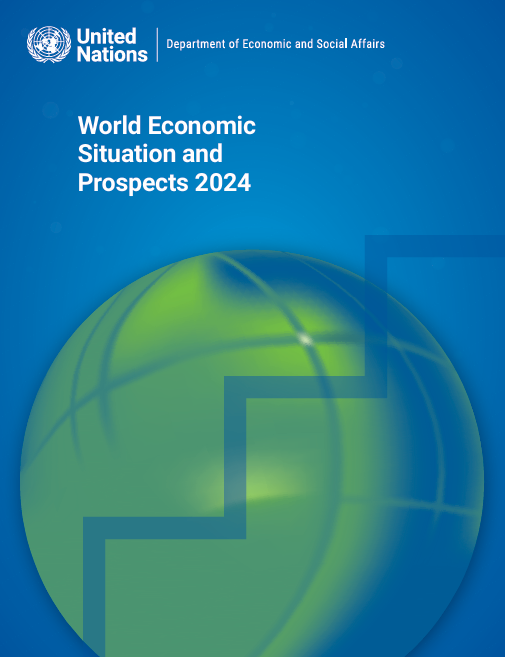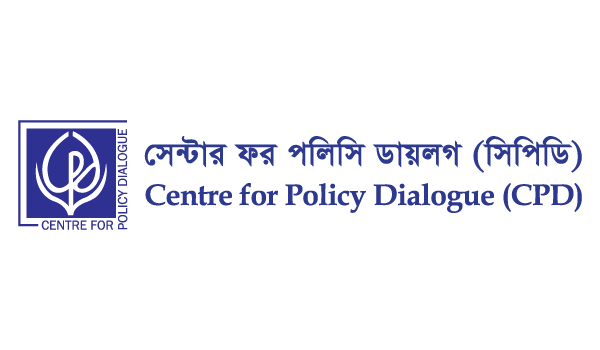Examines the global economy’s challenges, even in light of the resilience demonstrated by several major economies in 2023. It points out geopolitical tensions, extreme weather events, and tight financial conditions as potential risks to global trade and manufacturing. The report emphasizes the necessity of international collaboration and effective policy-making to boost global growth and advance the Sustainable Development Goals (SDGs). It also calls for considerable investments in sustainable development and climate action to strengthen the global economy. Furthermore, it highlights the need for decisive actions and cooperation to navigate the complex economic environment and accomplish the SDGs.
Key findings
- Global Economic Inequalities: The report highlights stark global economic inequalities, with rich economies largely recovering from the COVID-19 pandemic while developing economies have lost ground. Many developing economies face high debt levels, with more than a third at risk of a crisis.
- Economic Growth: Global economic growth is projected to be sluggish in 2024, with further slowing expected. Factors contributing to this include weak investment, escalating debt crisis, and uncertainties from conflicts and extreme weather events.
- Regional Economic Performance:
- United States: The United States economy showed resilience in 2023 but is projected to experience a moderation in economic growth in 2024.
- China: Although slightly weaker than expected, China’s economic recovery supported global growth. However, growth in China is also projected to moderate in 2024.
- Europe: The European economy is forecasted to experience a mild recovery after a sluggish performance in 2023.
- Debt and Fiscal Challenges: The report emphasizes the need for an effective debt workout mechanism to address the spiralling debt crisis and free up fiscal space for investments in critical health, education, and renewable energy.
- Trade and Industrial Production: Global trade and industrial production will improve in 2024 and 2025, gradually benefiting manufacturing-export-oriented economies. However, the recovery is projected to be subdued compared to historical standards.
- Private Consumption and Debt: Private consumption is expected to weaken in certain regions, with real incomes stagnating and consumer lending declining due to higher interest rates and credit rationing.
These findings and projections underscore the global economy’s complex challenges in 2024 and the need for coordinated efforts to address issues such as economic inequalities, debt sustainability, and sustainable development.
Overview
Chapter 1
Overviews the global economic environment and growth prospects. It conducts an in-depth analysis of the global economic landscape, highlighting key issues such as inflation, food insecurity, labour market trends, and investment prospects. The report also discusses trade challenges and underscores the importance of addressing international finance and debt issues to promote sustainable development.
- Global Economic Outlook: Discusses the resilience in global economic growth, which masks underlying risks and vulnerabilities. It highlights that growth is projected to moderate in 2024, with a protracted period of low growth looming.
- Inflation, Food Insecurity, and Poverty: Addresses the challenges of inflation, food insecurity, and poverty. It notes that while inflation has declined in most countries, it remains a key policy challenge. Higher food prices exacerbate food insecurity, and elevated inflation hampers poverty reduction efforts.
- Labour Market Trends and Challenges: Examines labour market trends, highlighting that developed countries’ labour markets remained strong while developing countries exhibited mixed trends. Gender gaps and youth unemployment are identified as key policy challenges.
- Global Investment and Trade Prospects: Discusses global investment and trade prospects. Global investment will likely remain subdued, with massive gaps in renewable energy investment. Global trade is facing multiple headwinds.
- International Finance and Debt Challenges: Concerns international finance and debt challenges. It highlights large shortfalls in financing sustainable development, declining official development assistance for the least developed countries, and how debt burdens impede progress towards the Sustainable Development Goals.
- Macroeconomic Policy Challenges: Delves into various macroeconomic policy challenges, including monetary policy, fiscal policy, industrial policy, and the importance of international cooperation.
Chapter 2
Provides an in-depth analysis of the impact of global monetary tightening on developed and developing economies. It emphasizes the challenges in transitioning from quantitative easing to quantitative tightening, the spillover effects on developing economies, and the essential role of policy coordination and cooperation in addressing these issues effectively.
- Introduction: Introduces the topic of global monetary tightening and its associated risks and challenges, particularly in the global economic environment.
- Global Financial Crisis and Quantitative Easing: Discusses the global financial crisis and the use of quantitative easing as an unconventional response to the crisis. The report examines the effects of quantitative easing on the economy, including its role in averting a financial catastrophe.
- Quantitative Tightening: Explores the transition from quantitative easing to quantitative tightening, highlighting the challenges developed economies face in exiting from quantitative easing. It also addresses the new round of quantitative tightening amid high inflation.
- Impacts on Developing Economies: Concerns about the spillover effects of quantitative easing on developing economies and the challenges posed by quantitative tightening for these economies. It examines how rising financial risks and fiscal challenges are impacting developing economies.
- Policy Options for Developing Economies: Outlines policy options for developing economies to navigate challenging times, including domestic policy measures and the importance of international cooperation in addressing the impacts of global monetary tightening.
- Export Growth and Macroeconomic Policy Space: Addresses issues such as weakening export growth for developing economies, the constraints on macroeconomic policy space, and the need for effective policy responses to mitigate the impacts of global monetary tightening.
Chapter 3
Emphasizes the pressing need to confront global economic issues, such as economic inequalities, climate action, debt crises, and uncertainties. It underscores the significance of bold investments and reforms to promote sustainable development and inclusive growth. The chapter provides an extensive overview of these economies, emphasizing key challenges, opportunities, and policy considerations for sustainable economic growth and development.
- Global Economic Inequalities: Highlights the stark global economic inequalities, with rich economies recovering from the COVID-19 pandemic while developing economies have faced setbacks. High levels of debt burden many developing economies, risking a crisis.
- Climate Action and Sustainable Development: Emphasizes the insufficient investment in climate action and sustainable development, noting that current levels are inadequate. The report underscores the need to invest significantly to drive sustainable development and climate action.
- Debt Crisis: Discusses the ongoing debt crisis, with debt service obligations reaching new heights. It calls for an effective debt workout mechanism to free up fiscal space for critical health, education, social protection, and renewable energy investments.
- Global Uncertainties: Addresses the uncertainties and risks posed by devastating conflicts and escalating extreme weather events contributing to global economic instability. These factors are hindering development progress and creating challenges for the global economy.
- Call for Action: Calls for bold investments to drive sustainable development and climate action, aiming to put the global economy on a more robust growth path. The chapter emphasizes the need for reforms in the international financial system to create a more inclusive and resilient global economy.
Developed Economies
-
- Northern America: Examines Northern America’s economic trends and outlook, highlighting key factors influencing economic growth and stability in the region.
- European Union and Other Economies in Europe: Delves into the economic landscape of the European Union and other European economies, discussing challenges and opportunities for economic development.
- Developed Economies in Asia: Extends to developed economies in Asia, providing insights into these countries’ economic performance and prospects.
Economies in Transition
-
- Commonwealth of Independent States and Georgia: Assesses the economic situation in the Commonwealth of Independent States and Georgia, discussing the transition process and economic challenges these regions face.
- South-Eastern Europe: Focuses on South-Eastern Europe, examining the economic developments and outlook for countries in this region undergoing transition.
Developing Economies
-
- Africa: Explores the economic landscape of Africa, highlighting growth prospects, challenges, and opportunities for sustainable development in the region.
- East Asia: Analyses economic trends in East Asia, discussing the growth trajectory, policy challenges, and prospects for countries in this region.
- South Asia: Examines the economic dynamics of South Asia, addressing key issues such as growth trends, labour market challenges, and policy considerations for sustainable development.
- Western Asia: Focuses on Western Asia, discussing economic developments, challenges, and opportunities for countries in this region.
- Latin America and the Caribbean: Extends to Latin America and the Caribbean, providing insights into the economic performance, vulnerabilities, and growth prospects for countries in this region.
Furthermore. Moreover. Nonetheless. Nevertheless. Henceforth.




